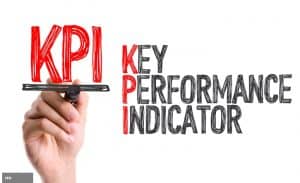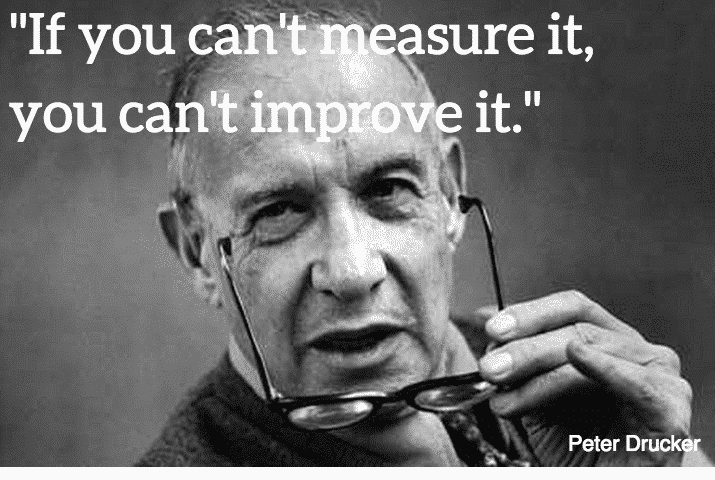“If you can’t measure it, you can’t improve it” – Peter Drucker
The great business management guru Peter Drucker is known for the above quote on measuring and improving performance in the business setting. 
 How the Best Inside Sales Teams Use KPIs
How the Best Inside Sales Teams Use KPIs
CSO Insights recently released its first-ever sales management study. The main takeaway? Quota attainment has decreased since 2012, and the missing ingredient is sales manager enablement. The research points to a very specific area that sales managers need to be enabled around: “…managing the right activities and coaching the related behaviors (leading indicators) that lead to the desired results (lagging indicators).” But which leading indicators should sales managers focus on? Calls? Building new pipeline? Meeting with VPs? LevelEleven’s research team analyzed 3,000+ sales KPIs being used by 800+ sales teams (with a special emphasis on inside sales teams) to find out. Leaders will walk away with an understanding of the most common KPIs used by the top inside sales teams, as well as how those differ with other selling roles. You will leave this session with a clear understanding of why a KPI-based approach to managing your sales team is important, a roadmap of how to define your own KPIs, and how to get them in place quickly.
The presentation was well done. Bob and David also offered up the The Sales KPI Report – 2017 Edition, which included all the summarized data that they reviewed. They also pointed the group to Sales KPI Scorecard Templates for free download as well.
Presentation Notes
I took notes during the presentation which you find below but I would also encourage you to download the report as well as my notes are not complete.
3 types of sales metrics
- Business results – ex. market share, new market penetration
- Sales objectives – ex. win rates, average deal size
- Sales activity – ex. conversations, pipeline created
A challenge for the front line manager and sales representative are to figure out which ones to focus on. All are important yet need to drill down to a precious few.
There is a sales coaching epidemic. Typically a former top performer is promoted to manager and this individual does not know how to manage or coach. Front line sellers are craving guidance.
3 types of coaching
- Deal coaching
- Meeting coaching
- Salesperson coaching
What should be discussed in a one on one coaching session.
- Get reps to self reflect
- What’s working
- What’s not
- Objective data
- Action Items and deliverables
37% amount of time a salesperson actually spends selling. This % sounds very little yet if one breaks it down to all the other responsibilities the front line seller has, it is not that surprising.
They then went into the KPI Sales Report – 2017 Edition. LevelEleven’s research team analyzed 3000+ KPIs being used by 800+ sales teams.
Most common KPI’s Based on Sales Role
Inside Sales Role
- Wins
- Progressing Opps
- Calls
- Meetings
- Activities
- Creating Opportunities
- Demos
- Quotes and proposals
- Emails
- Meetings Scheduled
Field Sales Role
- Meetings
- Wins
- Creating Opps
- Progressing Opps
- Quotes & Proposals
- Activities
- Calls
- Demos
- Emails
Hybrid Sales Role
- Wins
- Creating Opportunities
- Meetings
- Progressing Opportunities
- Activities
- Calls
- Quotes & Proposals
- Demos
- Emails
Account Management Role
- Activities
- Progressing Opportunities
- Wins
- Meetings
- Calls
- Cases
- Creating Opportunities
- Emails
- Quotes & Proposals
- Meeting Scheduled
- Demos
Sales Development Representative (SDR) Role
- Meetings
- Calls
- Creating Opportunities
- Activities
- Progressing Opportunities
- Wins
- Demos
- Emails
- Meeting Scheduled
Monthly KPI’s are most popular
Key points
- Meetings are most common
- Monthly timeframes are best
- Get back to the basics
6 steps to define your own KPI
- Define your own sales org setup: Teams: SDR, SMB, etc.
- What’s your personal hypothesis? In other words, what do you think should be measured?
- Interview salespeople and managers – top performers – what leads to wins, what do your peers seem to miss? what is a key that a deal close? middle performers – what makes top peers successful? what do you not do that you need to do?
- Reverse Engineer your sales process. For example…
- $1 M quota
- $25K average deal size = 50 wins
- 50 wins = 100 proposals
- 100 proposals – 200 discovery calls
- 200 discovery calls – 250 new opps
- 250 new opps – 400 new biz meetings
- 400 new biz meetings = 4,500 calls
- ID top 6 – 8 potential KPIs.
- Narrow down to top 4
- Is it tracked in your CRM today? If not, can it easily be added?
- Is it reportable?
Framework for Modern Sales Management
- Step 1: DEFINE – Define our key sales metrics
- Step 2: ALIGN – Align your sales organization
- Step 3: CALIBRATE – Monitor and course correct
- Step 4: ACCELERATE –
Round Table Discussion
As a group, we then discussed what sales KPI’s we measure in our own organizations. For example, I shared that each client we work with might be a tad different depending on their individual needs and business model. One CTG client that we assist we are tasked with both sales development and account management so we measure # of calls, # of emails, # of Proof of Concepts (POCs) created, # phone conversations, and # of email conversations. With another CTG client, we track similar metrics as the first however # of demos and # of onsite appointments are important as well.
Summary
The AA-ISP Michigan chapter meeting was worthwhile to learn and grow with my industry peers. Thank you Thomson Reuters for hosting. Again, I would encourage you to visit LevelEleven’s website and their report on Sales KPI’s to dig deeper into the topic. What about your organization, what are some KPI’s that you track? What are some challenges that you face when it comes to KPIS? I am interested to hear from you. And, if you attended, please share your comments below or feel free to add or correct me as needed.


 How the Best Inside Sales Teams Use KPIs
How the Best Inside Sales Teams Use KPIs